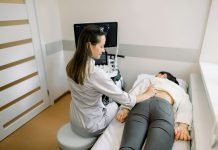
A recent study published in Ophthalmology reveals a promising treatment for Acanthamoeba keratitis (AK), a rare but serious eye infection that can threaten vision.
Researchers from Moorfields Eye Hospital in London, led by Dr. John K.G. Dart, have found that a combination of polihexanide (PHMB) and propamidine is both safe and effective in treating this sight-threatening condition.
Acanthamoeba keratitis is a challenging eye infection caused by the amoeba Acanthamoeba.
It can be difficult to manage and poses a risk of severe vision impairment if not treated promptly and effectively. This study aimed to assess the efficacy and safety of different treatment options for AK.
The study involved 127 patients who were divided into two groups. One group received treatment with topical PHMB at a concentration of 0.02 percent (0.2 mg/mL) in combination with propamidine at 0.1 percent (1 mg/mL).
The other group received treatment with PHMB at 0.08 percent (0.8 mg/mL) along with a placebo (PHMB at 0.08 percent).
The researchers discovered that the adjusted medical cure rate within 12 months was impressive for both treatment groups.
Specifically, the PHMB 0.02 percent + propamidine group achieved an adjusted cure rate of 86.6 percent (unadjusted rate of 88.5 percent). Similarly, the PHMB 0.08 percent group achieved an adjusted cure rate of 86.7 percent (unadjusted rate of 84.9 percent).
Importantly, the results demonstrated that the PHMB 0.08 percent treatment met the noninferiority criteria compared to the PHMB 0.02 percent + propamidine treatment, with a small difference of only 0.1 percentage points and a lower confidence limit of –8.3 percentage points.
Both treatment groups exhibited similar secondary outcomes, with a median best-corrected visual acuity of 20/20 and an overall treatment failure rate of 13.4 percent.
Among the patients who experienced treatment failure, 6.3 percent required therapeutic keratoplasty, a surgical procedure to replace the cornea.
Importantly, the study did not report any serious drug-related adverse events, highlighting the safety of the treatment.
Dr. Dart expressed optimism about the study’s findings, stating, “We hope that our new robust findings with polihexanide 0.08 percent will be a game changer for AK treatment, by improving access and the consistency of treatment, addressing currently unmet patient needs.”
It is worth noting that several authors involved in the study disclosed ties to pharmaceutical companies, including SIFI S.p.A., which sponsored and funded the trial.
Despite these disclosures, the study’s results offer hope for AK patients, suggesting a potentially more accessible and effective treatment option for this challenging eye infection.
If you care about eye health, please read studies about how vitamin B may help fight vision loss, and MIND diet may reduce risk of vision loss disease.
For more information about eye disease, please see recent studies about how to protect your eyes from glaucoma, and results showing this eye surgery may reduce dementia risk.
The research findings can be found in Ophthalmology.
Copyright © 2023 Knowridge Science Report. All rights reserved.




